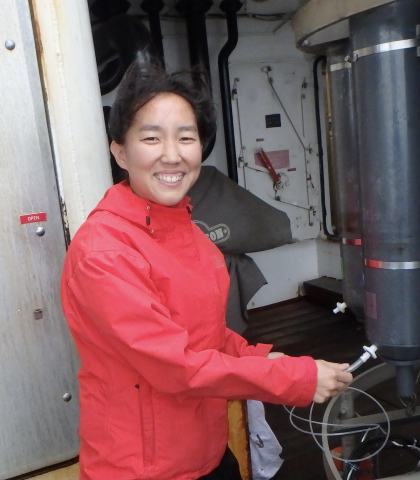event
Offshore Fronts Potentially Drive Variability in Phytoplankton Production in the NE Pacific
Primary tabs
The School of Earth and Atmospheric Sciences Presents Dr. Amanda Timmerman, University of Delaware
Offshore Fronts Potentially Drive Variability in Phytoplankton Production in the NE Pacific
Quantifying the biological pump and determining what causes variability is important to understanding the carbon cycle. Our study explores the cause of small differences in productivity rates on mesoscales in the offshore high nutrient low chlorophyll subarctic NE Pacific, where iron limits productivity. We utilized satellite, model, and shipboard measurements in 2014-2017 to explore the coupling between the physical environment and phytoplankton. We hypothesize that fronts, which we define as a 1°C temperature change over 1/3 degree distance, drives variability in both chlorophyll and production. Surface chlorophyll is more variable in this region than implied by historical studies and, in fact, has cohesive structure. The higher chlorophyll correlates with lower temperature and higher salinity, suggesting water is coming from below the surface. The higher chlorophyll is also associated with increased primary production, gross primary production, and carbon export. Higher chlorophyll regions tend to have more diatoms present and increased seasonal silicic acid drawdown indicating iron inputs. Further, when there were no fronts present in June 2017, the entire subarctic NE Pacific had low, invariant chlorophyll. Other mechanisms that could supply iron could not explain the chlorophyll patterns observed in the area. Our study adds to the mechanistic understanding of the coupling between physics and biology, enhancing future ability to predict spatial and temporal trends and improve models
Status
- Workflow Status:Published
- Created By:nlawson3
- Created:11/30/2021
- Modified By:nlawson3
- Modified:11/30/2021
Categories
Keywords
Target Audience

